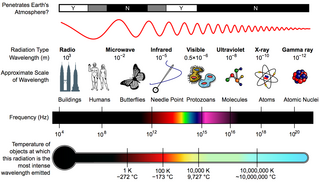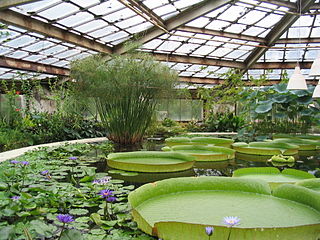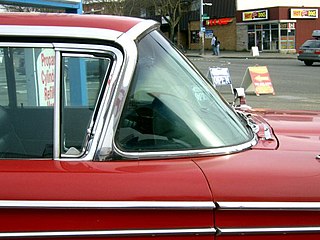
The electromagnetic spectrum is the full range of electromagnetic radiation, organized by frequency or wavelength. The spectrum is divided into separate bands, with different names for the electromagnetic waves within each band. From low to high frequency these are: radio waves, microwaves, infrared, visible light, ultraviolet, X-rays, and gamma rays. The electromagnetic waves in each of these bands have different characteristics, such as how they are produced, how they interact with matter, and their practical applications.

Sunlight is a portion of the electromagnetic radiation given off by the Sun, in particular infrared, visible, and ultraviolet light. On Earth, sunlight is scattered and filtered through Earth's atmosphere as daylight when the Sun is above the horizon. When direct solar radiation is not blocked by clouds, it is experienced as sunshine, a combination of bright light and radiant heat (Atmospheric). When blocked by clouds or reflected off other objects, sunlight is diffused. Sources estimate a global average of between 164 watts to 340 watts per square meter over a 24-hour day; this figure is estimated by NASA to be about a quarter of Earth's average total solar irradiance.

In passive solar building design, windows, walls, and floors are made to collect, store, reflect, and distribute solar energy, in the form of heat in the winter and reject solar heat in the summer. This is called passive solar design because, unlike active solar heating systems, it does not involve the use of mechanical and electrical devices.

A greenhouse is a special structure that is designed to regulate the temperature and humidity of the environment inside. There are different types of greenhouses, but they all have large areas covered with transparent materials that capture sunlight and heat. The most common materials used in modern greenhouses for walls and roofs are rigid plastic made of polycarbonate, plastic film made of polyethylene, or glass panes. When the inside of a greenhouse is exposed to sunlight, the temperature increases, providing a sheltered environment for plants to grow even in cold weather.

Sunglasses or sun glasses are a form of protective eyewear designed primarily to prevent bright sunlight and high-energy visible light from damaging or discomforting the eyes. They can sometimes also function as a visual aid, as variously termed spectacles or glasses exist, featuring lenses that are colored, polarized or darkened. In the early 20th century, they were also known as sun cheaters.

The windshield or windscreen of an aircraft, car, bus, motorbike, truck, train, boat or streetcar is the front window, which provides visibility while protecting occupants from the elements. Modern windshields are generally made of laminated safety glass, a type of treated glass, which consists of, typically, two curved sheets of glass with a plastic layer laminated between them for safety, and bonded into the window frame.

A window blind is a type of window covering. There are many different kinds of window blinds which use a variety of control systems. A typical window blind is made up of several long horizontal or vertical slats of various types of hard material, including wood, plastic or metal which are held together by cords that run through the blind slats. Vertical blinds run along a track system which can tilt open and closed and move side-to-side. Window blinds can be manoeuvred with either a manual or remote control by rotating them from an open position, with slats spaced out, to a closed position where slats overlap and block out most of the light. There are also several types of window coverings, called shades, that use a single piece of soft material instead of slats.
A space sunshade or sunshield is a parasol that diverts or otherwise reduces some of the Sun's radiation, preventing it from hitting a spacecraft or planet and thereby reducing its insolation, which results in reduced heating. Light can be diverted by different methods. The concept of the construction of sunshade as a method of climate engineering dates back to the years 1923, 1929, 1957 and 1978 by the physicist Hermann Oberth. Space mirrors in orbit around the Earth with a diameter of 100 to 300 km, as designed by Hermann Oberth, are intended to focus sunlight on individual regions of the Earth’s surface or deflect it into space so that the solar radiation is weakened in a specifically controlled manner for individual regions on the Earth’s surface. First proposed in 1989, another space sunshade concept involves putting a large occulting disc, or technology of equivalent purpose, between the Earth and Sun.

Smart glass, also known as switchable glass, dynamic glass, and smart-tinting glass, is a type of glass that can change its reflective properties to prevent sunlight and heat from entering a building and to also provide privacy. Smart glass for building aims to provide more energy-efficient buildings by reducing the amount of solar heat that passes through glass windows.

A curtain is a piece of cloth or other material intended to block or obscure light, air drafts, or water. A curtain is also the movable screen or drape in a theatre that separates the stage from the auditorium or that serves as a backdrop/background.

A window film, sometimes called tint, is a thin laminate film that can be installed on the interior or exterior of glass surfaces in automobiles and boats, and as well as on the interior or exterior of glass in homes and buildings. It is usually made from polyethylene terephthalate (PET), a thermoplastic polymer resin of the polyester family, due to its clarity, tensile strength, dimensional stability, and ability to accept a variety of surface-applied or embedded treatments.

An awning or overhang is a secondary covering attached to the exterior wall of a building. It is typically composed of canvas woven of acrylic, cotton or polyester yarn, or vinyl laminated to polyester fabric that is stretched tightly over a light structure of aluminium, iron or steel, possibly wood or transparent material. The configuration of this structure is something of a truss, space frame or planar frame. Awnings are also often constructed of aluminium understructure with aluminium sheeting. These aluminium awnings are often used when a fabric awning is not a practical application where snow load as well as wind loads may be a factor.

A cold shield is a device to protect an object from unwanted heating by thermal radiation or light. Usually it is a cooled object with low absorption and high reflectivity.

A sun visor is a component of an automobile located on the interior just above the windshield. They are designed with a hinged flap that is adjustable to help shade the eyes of drivers and passengers from the glare of sunlight.
A flame detector is a sensor designed to detect and respond to the presence of a flame or fire, allowing flame detection. Responses to a detected flame depend on the installation, but can include sounding an alarm, deactivating a fuel line, and activating a fire suppression system. When used in applications such as industrial furnaces, their role is to provide confirmation that the furnace is working properly; it can be used to turn off the ignition system though in many cases they take no direct action beyond notifying the operator or control system. A flame detector can often respond faster and more accurately than a smoke or heat detector due to the mechanisms it uses to detect the flame.

Shutter shades, also known as slatted shades, louvered shades, or Venetian blind shades are sunglasses that, instead of having darkened lenses, have horizontal slats similar to window shutters, which are an integral part of the frame.

Space mirrors are satellites that are designed to change the amount of solar radiation that impacts the Earth as a form of climate engineering. The concept was first theorised in 1923 by physicist Hermann Oberth and later developed in the 1980s by other scientists. Space mirrors can be used to increase or decrease the amount of solar energy that reaches a specific point of the earth for various purposes. They have been theorised as a method of solar geoengineering by creating a space sunshade to deflect sunlight and counter global warming.

Insulating glass (IG) consists of two or more glass window panes separated by a space to reduce heat transfer across a part of the building envelope. A window with insulating glass is commonly known as double glazing or a double-paned window, triple glazing or a triple-paned window, or quadruple glazing or a quadruple-paned window, depending upon how many panes of glass are used in its construction.
The following outline is provided as an overview of and topical guide to solar energy:

















